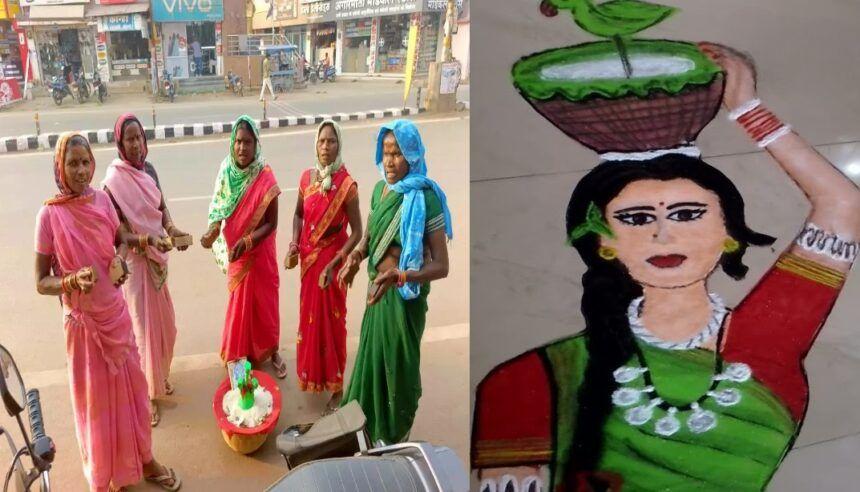
Raipur: Sua Dance: There is a Chhattisgarhi tradition of performing Sua dance before Diwali festival. Teams of women and school children are roaming around the streets and neighborhoods and performing Sua dance. In return, people give them money or gifts giving them gifts.
Deepawali brings happiness. Preparations for the festival begin about a fortnight in advance. These days, groups of children and women can be seen roaming around the streets and neighbourhoods of cities and villages and performing Sua dance. Since when has the tradition of Sua dance been going on?
There is no certified information about when the tradition of Sua dance started in Chhattisgarh and neither is there any written record of it. It is believed that the young girls must have been singing their heart out in front of the Sua bird. These words must have gradually come into vogue and later it turned into a Sua song and then a dance along with the song.
Earlier there was no means of entertainment
In modern society, people have many means of entertainment available like TV, cinema, mobile games, computer games, sports equipment, gardens, clubs etc. but in ancient times there were no such means. Parrot is the only bird which is very beautiful and imitates human language exactly. That is why earlier every household used to keep Parrot. In this way, girls started expressing their thoughts in the form of songs. Which is known today as Parrot dance.
How is Parrot dance performed
Parrot is a vegetarian bird which can speak exactly like human language. That is why girls consider it as a symbol and sing songs and dance in which religious, social and message oriented songs are sung.
In this dance, girls stand in a circular circle in a group of at least five to six. In which half the girls sing and half dance while repeating. During this, the girls play thapol or clap in a rhythm with both hands which works as a musical instrument.
Sua Mahotsav is celebrated during Diwali festival
Sua Mahotsav is celebrated by rural girls and women during Diwali festival. This is a dance in which no musical instruments are used. This song is sung and danced by girls or women only. Sua dance is performed in a group only. It is not a solo dance.
After the dance, one member bids farewell. In which the mistress of the house bids farewell with great respect by giving money and grains. The girls give blessings to the family by wishing them wealth, prosperity and a happy life for the son and daughter.
Since unmarried girls are considered as a form of goddess, the blessings given by them must have been considered as a boon. Today, Sua dance is deeply embedded in the culture of Chhattisgarh.
![]()






